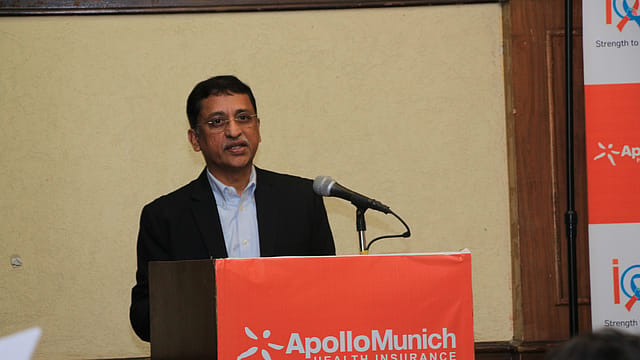Health insurance industry is difficult to disrupt: Apollo Munich
ADVERTISEMENT

From small fintechs to big payments and e-commerce companies like Amazon, Flipkart, and Paytm have ventured into insurance, and the industry is expected to see a lot of action and more competition in the next few years. While such companies are known disrupt the industries they enter, Apollo Munich Health Insurance—a joint venture between Apollo Hospitals Group and Germany-based reinsurer Munich Re—looks at the new digital players as tools for distribution, not as agents of disruption.
Fortune India spoke to Antony Jacob, Apollo Munich's chief executive officer, about the government’s Ayushman Bharat or National Health Protection Scheme, and the health insurance market in India. Edited excerpts:
With fintechs and other tech companies in the play, do you think competition in insurance will become more intense?
We monitor the ecosystem well. We do have traditional channels—agents and brokers, and semi-traditional which is digital. New technologies and stakeholders have come into the equation; some of them could apply for insurance licences and some could help in distribution. We believe that they are here to stay. Some may go only digital and apply for a licence, while there will be other technology startups who could assist insurance companies in using new platforms.
January 2026
Netflix, which has been in India for a decade, has successfully struck a balance between high-class premium content and pricing that attracts a range of customers. Find out how the U.S. streaming giant evolved in India, plus an exclusive interview with CEO Ted Sarandos. Also read about the Best Investments for 2026, and how rising growth and easing inflation will come in handy for finance minister Nirmala Sitharaman as she prepares Budget 2026.
We are also looking at companies who are already present in the space. We do regular visits to innovation centres, like the Indian Institutes of Technology (IITs) and find out what they are doing, what startups are doing, and we engage with them. This is an opportunity for players like us to use startups and other new platforms—to distribute and engage in terms of healthcare financing needs, and use business intelligence, artificial intelligence (AI) and analytics to put the right product in front of the customer.
Do you think digital players can disrupt the health insurance industry?
Health insurance is slightly difficult to disrupt. I think there is still an important need for some touch points. Can we have an Uber-type health insurance company? It is quite unlikely in the immediate future. I don’t see total disruption into just machines or platforms dealing with customers, I do believe that there will be human touch points at least in the immediate future. But, if you are looking at a simple health or travel insurance, it can be done by a machine. But, if you are looking for a claim, the machine cannot do that.
How have you seen the health insurance sector evolve in the past decade or so you've been here?
We believe that in the early years, it was ‘one-size fits all’. But, we have introduced different products for different categories. We have simple hospital indemnity cover, then we came up with a specialised one just for diabetes, for cancer patients, etc. Today, the market is significantly different from 10 years ago. It is very customer-focussed, both in terms of features and segments. Ten years ago, if you were talking of cashless, you were looking at anywhere between 24 hours and 72 hours; now it is a few minutes. And, we are asking ourselves, why should it take a few minutes, why not a few seconds?
India is still an under-penetrated market in terms of insurance. What is your strategy to change that and what are the kind of customers you looking at?
We believe that healthcare financing tools are required by anybody—be it people below the poverty line, or middle- or higher-income groups. To that extent, right from day one, the opportunity was pan-India. We have participated in government programmes like Rashtriya Swasthya Bima Yojana (RSBY) and now Ayushman Bharat. And, we have high-end policies as well. Today, technology has enabled us, in terms of sales and customer acquisition. As a company we would like to be across the country, across income segments.
You are also working with the government on Ayushman Bharat. What are the challenges you see in implementing a scheme of such scale?
It is an outstanding scheme—providing healthcare financing for people who don’t have the money to pay for it. The majority is paid for by the central government, a little bit by the state government, and none by the poor. The government has the liberty of choosing whether they want to do it as a trust model or they want an insurer. A trust model is when they take the risk on their own irrespective of what the claim is it will be paid. With an insurance company that risk is transferred to the insurance company based on the premium. Initially a majority of the states have opted for the trust model, while a few have gone for the insurance model. We have participated in some of the bids, and we won the Nagaland one, and we have just started executing.
The biggest challenge is making available healthcare facilities in smaller districts and villages. As you go down into districts and villages, healthcare facilities are largely run by the governments, missionaries, or trusts; that capacity needs to increase. Secondly the number of people, specialists, doctors, and healthcare staff has to go up. This will show results over a period of time.
